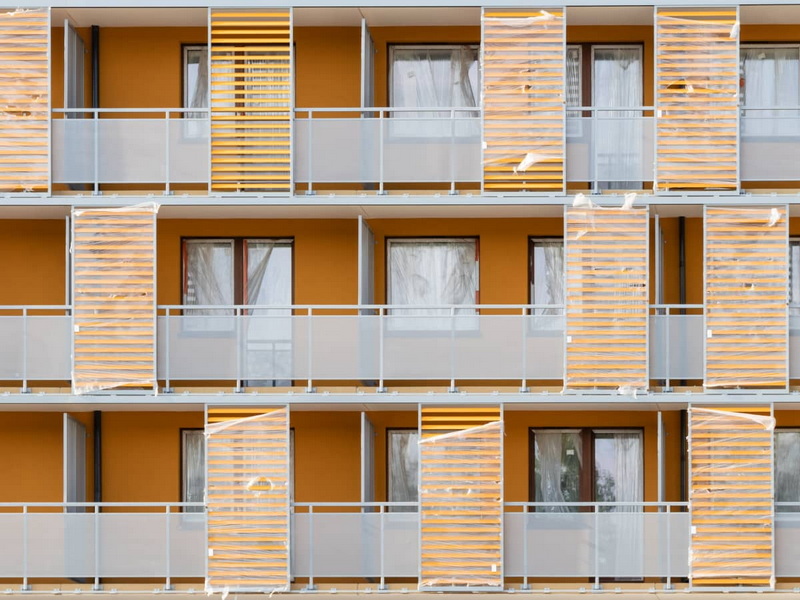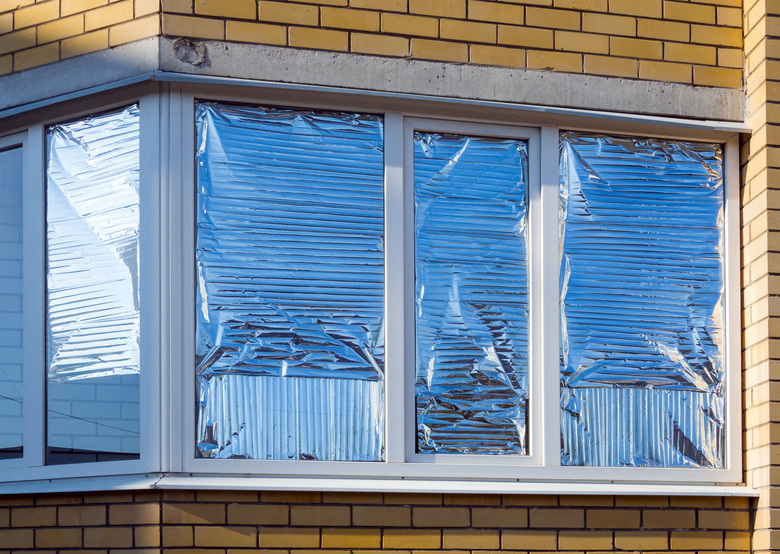English


Views: 222 Author: Dream Publish Time: 2024-12-24 Origin: Site











Content Menu
● The Science Behind Aluminum Foil
● Benefits of Using Aluminum Foil on Windows
● Application Tips for Best Results
● Alternatives to Aluminum Foil
● FAQ
>> 1. Can I use regular kitchen aluminum foil on my windows?
>> 2. Is it safe to put aluminum foil on windows?
>> 3. How long does aluminum foil last on windows?
>> 4. Will using aluminum foil reduce my energy bills?
>> 5. What should I do if I notice condensation between my window and the foil?
Aluminum foil, a common household item, is often used for cooking and food storage. However, many people have discovered that it can also serve as an effective tool for managing indoor temperatures when applied to windows. This article explores the various benefits and potential drawbacks of using aluminum foil on windows, providing insights into its effectiveness, application methods, and alternatives.

Aluminum foil is known for its excellent reflective properties. When sunlight hits the foil, it reflects much of the solar radiation away from the window, preventing heat from entering the home. This property makes aluminum foil an appealing option for those looking to reduce indoor temperatures during hot weather.
- Reflective Properties: The shiny side of aluminum foil reflects sunlight effectively. When applied correctly, it can significantly reduce the amount of heat that enters a room.
- Insulation: While windows are generally poor insulators, aluminum foil can enhance their thermal performance by reducing heat transfer. This can lead to lower energy costs as air conditioning systems do not have to work as hard to maintain comfortable indoor temperatures.
- Privacy and Light Control: Aluminum foil can obscure visibility from outside while still allowing some light to filter through. This balance between privacy and brightness is particularly beneficial in bedrooms or other private spaces.
1. Temperature Regulation: Applying aluminum foil can help keep homes cooler in summer and warmer in winter. In summer, it reflects heat away; in winter, it can reflect indoor heat back into the room.
2. Energy Efficiency: By reducing the need for air conditioning and heating, aluminum foil can contribute to lower energy bills.
3. UV Protection: Aluminum foil blocks harmful UV rays that can fade furniture and damage indoor plants.
4. Cost-Effective Solution: Compared to specialized window films or shades, aluminum foil is an inexpensive alternative that many households can easily implement.
5. Temporary Solution: In emergency situations or for damaged windows, aluminum foil can serve as a quick fix until more permanent solutions are available.
To maximize the benefits of aluminum foil on windows, proper application is crucial:
- Choose the Right Side: Ensure that the shiny side of the foil faces outward; this maximizes its reflective properties.
- Secure the Foil: Use tape or adhesive to secure the edges of the foil to prevent it from peeling off due to wind or moisture.
- External Application: For optimal results, apply the foil to the outside of the window rather than the inside to prevent heat from entering before it can be reflected away.
- Cut to Size: Measure your windows accurately and cut the aluminum foil accordingly to ensure a snug fit without gaps that could allow heat transfer.
- Use Multiple Layers if Necessary: In extreme climates, using two layers of aluminum foil may enhance insulation and cooling effects further.

While there are numerous benefits to using aluminum foil on windows, there are also some potential drawbacks:
- Aesthetic Concerns: Many people find that aluminum foil does not enhance the appearance of their home. It can look unappealing and may not fit well with neighborhood aesthetics.
- Heat Build-Up Risks: If not applied correctly, especially on the inside of windows, there is a risk that heat could build up between the glass and the foil, potentially leading to cracks in the glass.
- Limited Durability: Aluminum foil is not designed for long-term use outdoors; exposure to weather elements can cause it to degrade quickly.
- Environmental Impact: Frequent disposal of used foil may contribute to waste issues if not recycled properly.
- Potential for Condensation Issues: If moisture gets trapped between the window and the foil, it may lead to condensation problems that could damage window frames or interiors over time.
If you are looking for alternatives that provide similar benefits without some of its drawbacks, consider these options:
- Blackout Curtains: These can effectively block light and provide insulation without compromising aesthetics.
- Reflective Window Films: These films offer a more permanent solution with better durability and aesthetics compared to aluminum foil.
- Mylar Blankets: Often used in emergencies, these can reflect heat effectively while being lightweight and easy to apply.
Many homeowners have successfully implemented aluminum foil as part of their cooling strategies:
In a densely populated urban area where air conditioning is often too expensive or impractical due to space constraints, residents have found that applying aluminum foil to their south-facing windows significantly reduced indoor temperatures during peak summer months by as much as 10°F (5°C).
Families committed to sustainable living have reported lower energy bills after using aluminum foil in combination with other eco-friendly practices like planting shade trees outside their homes or installing solar panels.
Depending on your climate, you may want to apply or remove aluminum foil seasonally. In winter months, consider reversing its application to retain heat indoors by placing it on interior windows with the shiny side facing inside. This simple adjustment allows you to maximize energy efficiency throughout different seasons without needing extensive renovations or costly upgrades.
Using aluminum foil on windows is a practical solution for those seeking a cost-effective way to manage indoor temperatures. While it offers various benefits such as energy efficiency and UV protection, potential drawbacks like aesthetic concerns and risks of glass damage should be considered. Proper application is key to maximizing its effectiveness while minimizing risks.
In summary, aluminum foil serves multiple purposes beyond its conventional use in kitchens—ranging from energy savings and emergency preparedness to plant care—making it a versatile option for homeowners willing to experiment with this unconventional method.

Yes, regular kitchen aluminum foil works well; however, using thicker or heavy-duty aluminum foil may provide better insulation and durability.
Yes, it is generally safe when applied correctly; ensure that it does not trap excessive heat between the glass and the foil.
Aluminum foil is not designed for long-term use outdoors; exposure to weather elements can cause it to degrade quickly—typically lasting a few weeks to months depending on conditions.
Yes, by reflecting sunlight and reducing indoor temperatures, you may see a decrease in energy costs associated with cooling your home.
If moisture gets trapped between the window and the foil leading to condensation issues, consider removing the foil periodically or using an alternative method like blackout curtains or reflective films instead.
[1] https://www.gm-cx.com/does-aluminum-foil-on-windows-keep-heat-out.html
[2] https://www.housedigest.com/1360647/aluminum-foil-lining-windows-mistake/
[3] https://www.youtube.com/watch?v=UDcvB5selMQ
[4] https://www.reddit.com/r/DIY/comments/14xf1nx/would_it_be_bad_if_i_covered_my_window_with/
[5] https://www.chaluminium.com/top-8-functions-of-aluminum-foil-on-windows
[6] https://foilingservices.co.uk/why-do-people-use-aluminium-foil-on-their-windows/
[7] https://www.kanodwindows.com/how-to-enhance-household-energy-efficiency-utilizing-aluminum-foil-window-insulation-and-aluminum-slidingsash-windows/
[8] https://www.youtube.com/watch?v=BKsFHOa4Mfc
[9] https://www.windowfilm.co.uk/commercial/window-foils-and-glass-films
[10] https://alfipa.com/articles/insulation-with-aluminium-foils/
Seven Requirements for External Doors And Windows of Passive Rooms
How Much Do You Know about The Design Standards for Aluminum Alloy Door And Window Dimensions?
Welding Vs Stainless Steel Fabrication: Understanding The Manufacturing Process Differences
Stainless Steel Fabrication Vs Powder Coated Steel: Durability And Cost Comparison
CNC Machining Vs Stainless Steel Fabrication: Pros And Cons for Industrial Use
Stainless Steel Fabrication Vs Carbon Steel Fabrication: Key Differences Explained
Stainless Steel Fabrication Vs Aluminum Fabrication: Which Is Right for Your Project?
Stainless Steel Grades 201 Vs 304: Cost Vs Performance Breakdown
316L Vs 316 Stainless Steel Grades: Which Is Better for Corrosion Resistance?
Comparing Austenitic Vs Martensitic Stainless Steel Grades: What You Need To Know?
